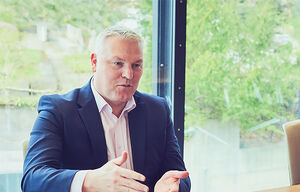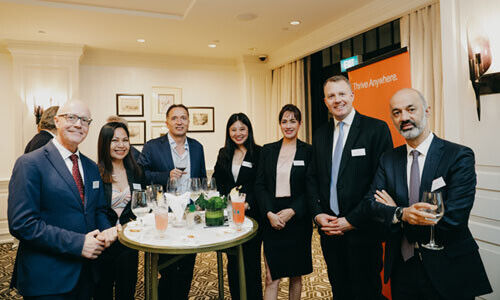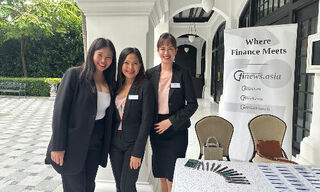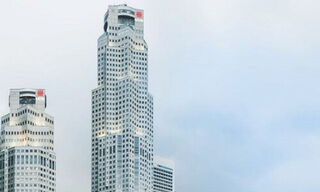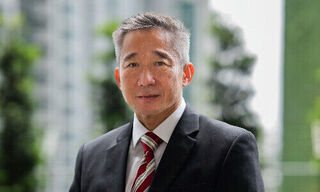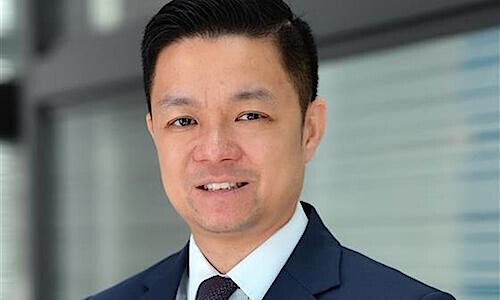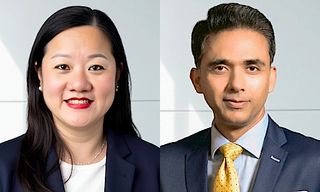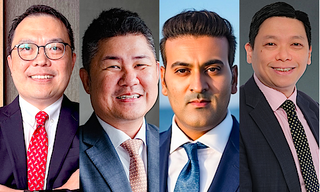Singapore Gets Crazier and Richer
The government’s adjustment of the global investor program puts the city-state out of easy reach - for even centimillionaires. finews.asia takes a closer look.
If you are a billionaire, and you want to park some of your assets in Singapore, you are still in luck. For all the other brackets of the ultra-high net worth out there looking to place a family office or assets in the city-state, you better watch out. It might not be the best place anymore.
Earlier this month, the Singapore Economic Development Board’s changes to its so-called Global Investor Program (GIP) kicked in and they are nothing to sneeze at.
Stiff Increase
The minimum an overseas investor needs to invest under the first of three investment options (A) has quadrupled. That now means coughing up just under $7.5 million.
But, as before, you can’t just do anything with the money afterward. It needs to be put in a new business or an existing operation in Singapore with at least 30 employees, of which half must be from the city-state by the fifth year of operation if the investor in question wants to keep his or her permanent residency (PR) status.
Before these changes, that same overseas investor only needed to hire 10 employees, half of whom had to be Singaporean while spending an additional $1.5 million on a local business to keep his or her PR status when it came up for renewal.
Tenfold Increase
The second option (B) investors can take advantage of takes it even further.
Here the city-state now requires a tenfold increase in investment, with the applicant having to put in at least $18.6 million into a specific GIP-selected fund that invests in locally based companies. They also must keep it there if they want to renew their PR status.
The old requirement asked for far less investment but stipulated that the GIP fund needed to have half its assets in local companies. As with option A, they would also have needed to hire 10 employees, of which half needed to be Singaporean and they also were required to come up with the same amount in business spending.
Family Offices Galore
The third option (C) that investors from abroad have involves family offices, currently an oft-discussed subject in the city-state. Depending on how you look at it, the requirement looks like it was ratcheted up almost 80 times – or not.
What is clear is that the new applicant needs to show he or she has set up a Singapore-based single-family office with a minimum of about $150 million, with a quarter of the amount required to be invested in MAS-licensed exchanges, qualifying bonds, and fixed instruments, funds distributed by managers registered and licensed in Singapore, or by direct injection of private equity into a business based in the city-state.
To renew their PR status, they must maintain the same levels of investment throughout the five-year period and hire at least 5 family office professionals, of which 3 need to be Singaporean.
Before this, they could invest a far smaller amount of roughly $1.9 million amount (hence the nearly 80 times figure) into a new or existing family office, which itself only had to be at least $150 million in size.
A quarter of the funds needed to be held in Singapore and they had to hire at least 10 employees, half of whom needed to be Singaporean (including 3 investment professionals) while also spending the requisite $1.5 billion over the first five years.
Local Concerns
But what does this all mean and, importantly, why is it being changed now? Part of the rationale is probably domestic. Living costs have reached a tipping point, as various industry sources have relayed anecdotally to finews.asia.
Apparently, one source indicates that even highly compensated foreign bankers in Singapore stably employed at a large financial institution complain about having little actual disposable income, particularly if they work in functions or teams with moderate bonus levels.
Spending Cuts
Many have cut discretionary spending sharply, with another well-placed source at a significantly sized institution relaying matter-of-factly of knowing certain pockets of front-line bankers responsible for overseas offshore clients who have sharply limited unnecessary bar, restaurant, and mall visits.
Another industry source relayed the fact that they were in a position, as landlords, to easily double the asking price for rent on their units within the space of a year and that even they felt uneasy about the current situation, especially when contracts come due.
It is clear no one should be shedding any tears for bankers and landlords in the context of what is being faced by many other people around the world.
Unbalanced Economy
At the same time, forcing everyone to live the sort of lifestyle encapsulated by the movie «Crazy Rich Asians» is not necessarily the sign of a healthy, balanced, and vibrant economy, particularly if bankers are choosing not to eat out while landlords seem hesitant to charge the going market rate.
Beyond that, as finews.asia has reported, family office incentives have come under scrutiny in parliament recently and the new, more stringent thresholds may simply be a prompt, wide-ranging reaction to all of these developments.
The crux of the matter is whether the influx of wealth into Singapore is driving all these developments or not, as it is hard to convincingly draw direct links between them.
Not Many
The conventional wisdom is that there appears to be a far higher number of wealthy around the world than there used to be. Still, that does not mean that there are all that many.
Most statistics, which usually cite «Forbes» or «Hurun», indicate there are between 2,700 and 3,100 billionaires around the world.
In other words, you can fit all of them easily into a largish indoor hall, albeit with a certain level of discomfort most would be unwilling to tolerate for long.
High Market Share
To keep things simple, as the «Hurun» and «Forbes» numbers vary, let’s say about 700 of them are likely to be from China and 700 from the US, followed by India and Germany with roughly 140 each.
If we set those numbers against The Singapore Economic Development Board’s indications that about 120 investors were given PR status since the last adjustment was made to requirements in GIP in 2020 and if we make the assumption that most were billionaires, that would mean the city-state currently has a sizeable 4 percent global market share of the world’s wealthiest individuals.
By extension, if most of the applications came from China and India, both of which have higher cultural affinity and are closer geographically than the US and Europe, that would suggest an even higher share of the market.
Muted Growth
For example, if all the successful applications had been from China, that would suggest a market share of nearly 17 percent or almost 1 in 5.
What this all does is imply that the city-state already has a very significant share of the overall market for billionaires and that growth from here on out is likely to be far more muted than in the past.
This is particularly so given that other cities, such as Hong Kong, seem intent on encroaching on its turf by considering whether to allow the uber-wealthy to apply with assets denominated in Chinese yuan and other, similar measures.
Out of Reach
So, if the new rules won’t keep the billionaires out of the way as they are already mostly there, what they still do is put Singapore out of reach for most all other categories of wealth.
The average centimillionaire, for example, must now fork over between 7.5 and 18.6 percent of all their investable assets for PR status.
By itself, that seems to be a pretty big ask if they have no previous connection of any kind to the city-state.
Also Not Many
As with the billionaire bracket, they might be extremely wealthy but the entire population of them numbers just 25,490, as Henley & Partners indicated in an October 2022 survey.
That means that they can easily be shoehorned into a medium-sized football stadium such as the Letzigrund in Zurich.
Here is also where it gets interesting. According to Henley, the preponderant majority, or 9,730 of them (38 percent) are from or based in the US, with their numbers distantly followed by China at 2,021 and India at 1,132.
No Connection
Given that, it seems improbable that your average centimillionaire as modeled by their statistics has much, if any, connection to Singapore, making the new thresholds a significant barrier to entry.
Not only do most have to get over their home market bias, but they also must get very comfortable with lots of people working for them in a far-flung, distant time zone.
It means that in all likelihood, the new stipulations will make stop Singapore from much crazier and richer than it is now. Still, that may have been the clear intent of the authorities from the outset. But we are only likely to fully know the truth with the benefit of hindsight.



